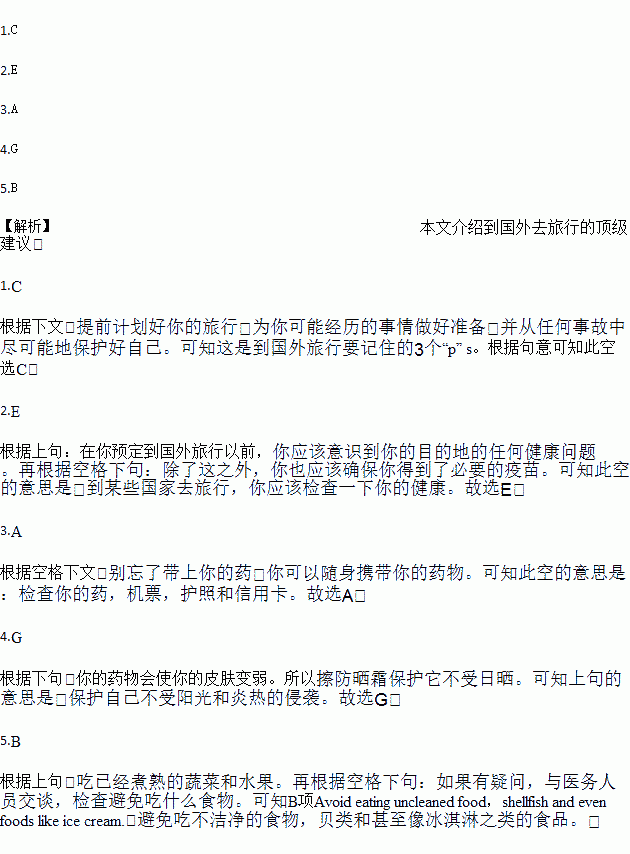题目内容
Top Tips for Travelling Abroad
Travelling abroad,for business or pleasure,should be a fun experience,1.Plan well in advance for your trip,be prepared for what you might experience,and protect yourself as best as you can from any accidents. Here are some tips:
·Check you are fit for travel. Before you book your trip abroad you should be aware of any health problems at your destination.2.Besides this,you should make sure you receive the necessary vaccines(疫苗).·3.Don't forget to take your medication with you. You can carry your medication on the plan with you. It is wise to take the double amount of medication that you need—put half in your carry?on bag and half in your “in the hold” bag. That way,if your carry?on bag gets stolen,you still have your medication in your hold bag.
·4.Your medication makes your skin weaker,so protect it from sun by wearing sunscreen,a hat,and seeking shade where possible. Also,you may find that you are more sensitive to the heat,so drink plenty of water,and carry a hand fan.
·Eat and drink wisely. While abroad,drink bottled water and even clean your teeth with bottled water. Take extra care with your diet,so avoid any stomach upsets. If you travel to second or third world countries,eat vegetables and fruit that have been cooked.5.If in doubt,speak to a medical person to check what foods to avoid.
A.Check your medicine,ticket,passport and credit card.
B.Avoid eating uncleaned food,shellfish and even foods like ice cream.
C.Just remember the three “p” s.
D.On the website,you can search for travel advice on individual countries.
E.You should check about your fitness to travel to certain countries.
F.Travel insurance is a must.
G.Protect yourself against the sun and heat.


 t always easy.
t always easy. , they often reach excellent academic results.
, they often reach excellent academic results. appy to be playing in the backyard with my toys.
appy to be playing in the backyard with my toys.